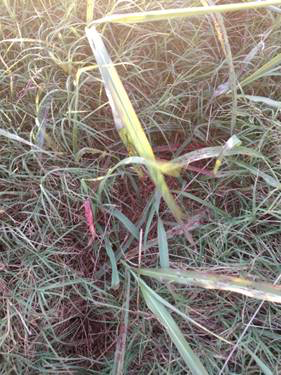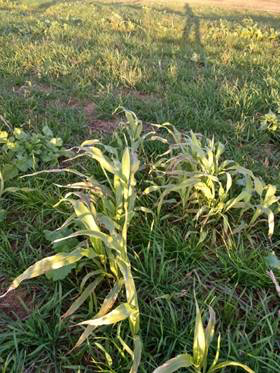Cow-Calf Corner | November 8, 2021
Cattle Markets Move On
Derrell S. Peel, Oklahoma State University Extension Livestock Marketing Specialist
The pandemic and other market shocks (i.e. packing plant fire, unprecedented winter storm, cyber-attack, etc.) since 2019 have resulted in impacts and residual effects that affect cattle and beef markets in different ways and over different lengths of time. Much of the challenge in 2021 has been to get numerous cattle markets and a multitude of beef product markets more in synch as an industry. Of course, there continue to be ongoing COVID-19 related impacts plus the fact that some markets may be permanently changed or affected for a very long period of time.
The biggest industry bottleneck in 2021 has been the fed cattle market and the struggles to clear the placement backlog resulting from feedlot dynamics in 2020. Those dynamics pushed the cyclical peak in feedlot production into 2021. The fed cattle market problems are the result of this peak feedlot production constrained by packing industry capacity limitations. Long-term reductions in packing industry infrastructure combined with chronic labor limitations, which predate but are made worse by COVID-19, added months to the time needed to improve the fed cattle market situation. The long-awaited improvement in fed cattle markets appears to have arrived with fed cattle prices jumping roughly $5/cwt. the past two weeks.
Maybe the stars are finally lining up for the beef industry. With the fed cattle market pinch point removed, cattle and beef markets are poised to realign and rebalance. The industry will be better positioned to capitalize on the optimism that has been building in recent months. Tighter supply and continued strong demand will take markets to higher levels. Strong wholesale and retail prices have been pulling on the industry most of this year. The trade picture continues to improve with the latest data showing additional growth in beef exports and reduced beef imports. On the supply side, feeder cattle markets, already higher year over year, are increasingly supported by cyclically reduced feeder cattle supplies and poised to benefit even more from higher fed cattle prices.
This not to say that everything is all roses for the industry. Plenty of challenges remain and new ones will no doubt emerge. Drought continues to be a major factor in many regions and will not only directly impact producers in those regions but will also determine the trajectory of the industry in the coming years. Higher crop and feed ingredient prices are a particular challenge for feedlots but also for cow-calf and stocker producers, most especially those struggling with drought-reduced feed and forage availability. Generally higher input costs, especially energy and fertilizer, will affect producers going forward. Labor issues are pervasive across the industry with lack of available and reliable labor impacting all sectors from ranch and feedlot production to packing and further processing industries to retail grocery and food service establishments. Supply chain disruptions will continue to affect both input and output markets in the coming months.
Barring new exogenous shocks (Black Swans) that are always a potential threat to the industry, cattle and beef markets are ready to move on. After many months of turmoil and heightened volatility, the industry is looking forward to the opportunities as well as the challenges of a more stable, but always dynamic, market environment in the coming months.
Preparing Cows for Winter and Spring Calving
Mark Z. Johnson, Oklahoma State University Extension Beef Cattle Breeding Specialist
As discussed last week, reproductive efficiency is highly correlated to nutrition. The target Body Condition Score (BCS) going into calving season is 5.5 for the mature cow herd and 6 for the first calf heifers. Early management to meet these goals is important because drastic changes in BCS during late pregnancy and early lactation are challenging and costly to achieve. Measures of cow herd performance like Pregnancy Rate, Calf Crop Born and Calf Crop Weaned when evaluated as a percentages of Females Exposed are valuable pieces of information which can be used by producers to make sound management decisions. Balance of nutrition to mature cow size and milk production is essential to optimize reproductive efficiency and maternal performance. This balance is achieved through: 1) grazing the proper amount of cows per acre; 2) knowing when and what nutritional supplementation is needed; and, 3) good husbandry, herd health and vaccination programs. If our cows were thin at weaning and/or we were disappointed by the cow herd performance measures, now is the time to begin taking action.
Feed cost represents the largest variable cost in cow-calf operations and most of this expense is incurred during the winter and early spring. Un-needed supplementation increases feed cost without real benefit. Evaluation of BCS on your cows this fall at weaning provides producers with information to make cost saving management decisions with regard to supplementation and feeding through the winter. If your bred heifers and mature cow herd are at the target BCS they can be maintained from now until calving. If breeding females need to gain body condition, now is the time to take action (while they are still in the middle trimester of pregnancy).
Feeding in Separate Groups
Separating the thinner females at this time of year to gain the body condition needed to ensure reproductive efficiency next spring is worth the extra time and management. Feeding cows in separate groups only needs to take place long enough to get the thinner cows to their target BCS. At that point, all cows can be put back together and fed/managed alike going into calving season. Feeding thinner cows separately will save money and improve profit potential.
Computer software, such as OSU Cowculator, is useful to pinpoint the nutritional requirements of cows and the supplementation or feeding necessary to reach optimum BCS. Cowculator and other useful tools can be found at beefextension.com.
Prussic Acid in Warm Season Annuals this Fall
Paul Beck, Oklahoma State University Extension Beef Nutrition Specialist
Many of producers in Oklahoma are growing summer annual forage crops such as forage sorghums or sudangrass (or their hybrid sorghum x sudangrass) or have johnsongrass in pastures. Several producers I have talked to using these forages as a fall stockpile forage for cows or weaned calves. Other producers that planted small grains directly into the standing cover crops or crop residues have seen volunteer corn, sorghum, or sudan come up in the planted wheat.
The average frost date for most of central and northern Oklahoma is upon us, and prussic acid will be (or already is) an issue in certain forages commonly found in fields and pastures.
Prussic acid is found when susceptible plants are under drought conditions or after a light frost.
Prussic acid is a form of cyanide and will absorb through the rumen wall and reach the blood stream. When prussic acid combines with hemoglobin in the red blood cells, the cells will take up oxygen but will not be able to release it. This causes suffocation. The oxygen saturation in the red blood cells causes the blood to have a bright cherry red color. The symptoms of prussic acid poisoning are similar to the symptoms of nitrate poisoning, but in nitrate poisoning the red blood cells cannot take up oxygen, causing blood to be a dark chocolate brown color. The symptoms include: anxiety, weakness, labored breathing, and death. Many times the first symptom observed by producers is dead animals.
The plants that have the most issues with prussic acid poisoning are (in order of susceptibility) grain sorghum (most), johnsongrass, corn, sorghum-sudan hybrids, and finally pure sudangrasses. Millets (such as pearl millet) do not produce prussic acid, but are nitrate accumulators.
Prussic acid is higher in younger plants than older plants, higher in leaves than stems, and higher in upper leaves than lower leaves. This means the volunteer in the newly planted small grain fields are likely to have the highest levels.
What to do…
- Do not allow animals to graze fields until plants reach 18 to 24 inches.
- Do not graze drought damaged plants until 4 days following a good rain.
- Do not graze frost damaged plants during the first 7 days following a frost or until plants are completely dried out and brown in color.
- Frost damaged plants that are not killed by the frost can be grazed within 4 days if they are greater than 30 inches tall.
- Frost damaged plants that are not killed by the frost and are < 30 inches tall should have cattle kept off for 10 to 14 days
Prussic acid can be an issue every year. But with knowledge and management it is something that we can work around with no impact on animal health or performance.
For more information on prussic acid poisoning look at the OSU Extension Fact Sheet:PSS-2904 Prussic Acid Poisoning at Prussic Acid Poisoning | Oklahoma State University (okstate.edu)
See a classic episode of SunUp TV Cow-Calf Corner where Dr Glenn Selk talks about prussic acid poisoning in johnsongrass. Cow-Calf Corner 9/28/13 — SUNUP TV (okstate.edu)
Pictures: Frost damaged johnsongrass in a waterway next to a wheat field south of Mulhall and frost damaged volunteer sorghum x sudangrass from a summer cover crop blend in a central Oklahoma crop field, these forages could cause death losses from prussic acid poisoning if consumed by livestock.


